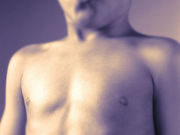Main cause of chest injury was rollover, followed by collision with landscape, falls
TUESDAY, Nov. 29, 2016 (HealthDay News) — For young people who ride all-terrain vehicles (ATVs) without a helmet, the risk of head trauma is an established and serious concern; however, these vehicles may also pose a high risk for severe chest injuries, according to a study presented at the annual meeting of the Radiological Society of North America, held from Nov. 27 to Dec. 2 in Chicago.
The study included records from 455 patients, 18 years old and younger. All had chest imaging at a trauma center in Houston after ATV-related incidents. The accidents occurred between 1992 and 2013. Of those admitted, 102 (22 percent) suffered a chest injury.
The researchers said that 40 percent of patients with chest injuries were treated in an intensive care unit, compared to 22 percent of patients without chest injuries. On average, patients with chest injuries were 13 years old. The most common chest injury, occurring in 61 percent of patients, was pulmonary contusion. Forty-five percent of patients had a collapsed lung and 34 percent had rib fractures. Eight deaths occurred among the 102 patients who had chest trauma. The study authors found that the biggest cause of chest injury was rollover (43 percent), followed by collision with landscape (20 percent) and falls (16 percent).
“While this study only highlights a specific subset of potential injuries, their incidence and clinical significance cannot be overlooked,” study author Kelly N. Hagedorn, M.D., radiology resident at McGovern Medical School at The University of Texas Health Science Center at Houston, said in a statement. “Other studies have demonstrated the prevalence of orthopedic and neurologic injuries, and the most recent Consumer Product Safety Commission report estimates that 23 percent of ATV-related fatalities since 1982 have occurred in children younger than 16.”
Copyright © 2016 HealthDay. All rights reserved.








